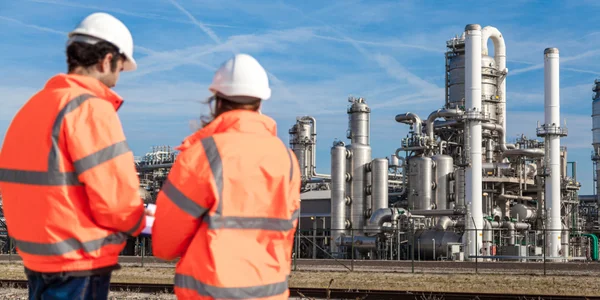Cyclone Dust Collector
- Mga Electrostatic Precipitator
- Baliktarin ang Mga Bahay ng Air Bag
- Mga filter ng tela
- Hybrid electro filter
- Flue Gas Desulphurization
- Sapilitang draft cooler
- Mga scrubber
- Mga halaman sa paglilinis ng gas
- Mga bagyo
- Multiclones
- VOC + Sistema ng pagtanggal ng amoy
- Sistema ng pagkuha ng alikabok
- Sistema ng pagkuha ng usok
- Mga kagamitan sa proteksyon ng pagsabog
- Mga fan at blower
- Paggamot ng waste water
- Air sa Air Heat Exchanger
Mga opisina
HEADQUARTER

Alemanya
-
Intensiv Filter Himenviro Technologies GmbH
Neustraße 45 - 49, 42553, Velbert, Deutschland/Germany - +49 20534200990
REHIYONAL NA TANGGAPAN

Great Britain
-
Intensiv Filter Himenviro UK Limited
47, Bath Street WS13BX, Wallsall West Midlands, Great Britain - +44 1922 628893
REHIYONAL NA TANGGAPAN

United Arab Emirates
-
Intensive Filter Himenviro Technologies FZE – LLC
Business Center, Sharjah Publishing City Free Zone, Sharjah, UAE - +971-556074697
REHIYONAL NA TANGGAPAN

India
-
Intensiv-Filter Himenviro Private Limited
D-247/11, Sector-63, Noida - 201301, Uttar Pradesh, India - +91-120-4642-500
REHIYONAL NA TANGGAPAN




India
-
Intensiv-Filter Himenviro Private Limited
D-247/11, Sector-63, Noida - 201301, Uttar Pradesh, India - +91-120-4642-500
REHIYONAL NA TANGGAPAN




India
-
Intensiv-Filter Himenviro Private Limited
D-247/11, Sector-63, Noida - 201301, Uttar Pradesh, India - +91-120-4642-500
Centrifugal Collectors o Cyclones Para sa Industriya
Bahay » Mga solusyon » Cyclone Dust Collector
Ang mga bagyo ay aparato sa pagkolekta ng alikabok na naghihiwalay sa particulate mula sa hangin sa pamamagitan ng centrifugal force. Ang bagyo ay kumikilos sa pamamagitan ng paggawa ng a puyo ng tubig palabas sa papasok na airstream. Ang inertia ng mga particle ay nagpapanatili sa kanila na gumagalaw sa orihinal na pagkakasunud-sunod at naghihiwalay sa kanila mula sa airstream habang ang airstream ay itinutulak upang baguhin ang mga direksyon. Ang mga pakikipag-ugnayan sa loob ng isang bagyo ay kumplikado sa kabila ng pagiging simple ng cyclone sa hitsura at operasyon. Ang pagkakaroon ng dalawang vortices sa panahon ng operasyon ay nag-aalok ng isang direktang paliwanag para sa kung ano ang nangyayari sa loob ng isang bagyo. Ang mga malalaking particle ay dinadala pababa ng pangunahing puyo ng tubig habang ito ay umiikot. Malapit sa base ng cyclone, isang inner vortex ang bumubuo at umiikot paitaas, na nagdadala ng mas maliliit na dust particle.
Ang mga bagyo ay mura, mababang pagpapanatili, at makinarya na lumalaban sa temperatura. Bukod pa rito, pinapagana nila ang tuyong pagbawi ng produkto at binabawasan ang pasanin sa pangunahing kolektor. Ang mga bagyo, sa kabilang banda, ay nagbibigay ng mga kakaibang problema sa disenyo at mahirap hulaan sa mga tuntunin ng pagganap. Ang tumpak na data ng paggamit ay mahalaga, ngunit sila ay kumukuha ng maraming lugar ng halaman. Mahina ang pagganap ng mga bagyo sa pag-alis ng mga pinong particulate. Kadalasang ginagamit ang mga ito bilang pre-cleaner upang maalis ang mas malalaking particle na maaaring makapinsala sa mga bag ng collector ng tela o makabara sa mga basang scrubber kung hindi man. Dapat tandaan na ang pagdaragdag ng cyclone sa isang sistema ng bentilasyon ay maaaring hindi makabawas sa pangkalahatang resistensya ng system dahil ang pagbaba ng presyon ng inertial cyclone collector ay maaaring higit pa sa pagbaba ng resistensya sa baghouse na dulot ng mas mababang pagkarga ng alikabok. Ang pagbaba ng presyon ay mula sa 3 pulgadang wg para sa mga inertial cyclone collector na may mababang kahusayan hanggang sa hanggang 8 pulgadang wg para sa mga modelong may mas mataas na kahusayan.
Ilang pangunahing benepisyo ng Cyclone dust collectors
- Mas Malinis at Ligtas na Paraan
- Nabawasan ang Dalas ng Paglilinis
- Mas mahusay na Pag-filter ng Hangin
- Mas mahusay na Airflow Efficiency
- Mababang Antas ng Ingay
Aplikasyon
Mga Aplikasyon ng Cyclone Dust Collector
Ang isang cyclone dust collector machine ay madalas na nagsisilbing mura at low-maintenance na stand-alone na dust collector. Mayroon silang bentahe ng mabilis na paglilinis upang tanggapin ang susunod na batch ng produkto na inaalis ang pangangailangan na linisin ang anumang natitirang mga linya mula sa mga filter ng bag na isang proseso na nakakaubos ng oras at nakakapagod. Sa pamamagitan ng dual-stage dust collection system, ang cyclone dust collection system ay nilagyan upang mahawakan ang mga magaspang na particle pati na rin ang pinong alikabok. Ang mga cyclone dust collectors ay kadalasang ginagamit bilang mga pre-cleaner upang alisin ang karamihan ng malalaking particle bago iproseso sa isang mas mahusay na bag house. Ang mga ginawa ng mga tagagawa ng dust collector ay nailalarawan sa pamamagitan ng mataas na kahusayan, malaking dami ng pagproseso, at matatag na pagganap.
Ang Dust collector ay walang gumagalaw o umiikot na bahagi at bilang resulta, nangangailangan ito ng pinakamababang maintenance. Ang makina ng pagkolekta ng alikabok ay maaaring idisenyo ayon sa nais na aplikasyon upang magbunga ng mas mahusay na pagganap. Ang mas maliliit na footprint ng Dust Collector ay ginagawa itong kumonsumo ng mas kaunting espasyo sa sahig at samakatuwid ay walang problema habang nag-iimbak. Ang dust collection machine ay may ilang variant, katulad ng- Single/mono Cyclones, Twin Cyclones, Quad/Hexa, o Octa & Modular Cyclones. Ang cyclone dust collector ay maraming application at ginagamit para sa Guar Gum Processing, Fly Ash Handling plants, Buffing Machine, Shot & Sand Blasting at marami pa.


Proseso
Aming Serbisyo
Pag-aaral ng Kaso
Mga Madalas Itanong
1. What is a cyclone dust collector?
A cyclone dust collector is a device that removes dust and debris from the air using a spinning motion. As air enters the collector, it spins rapidly, causing heavier dust particles to move to the outer edges and fall into a collection bin. Cleaner air then exits through the top. This method is effective for removing large dust particles from the air.
2. How does a cyclone dust collector work?
In a cyclone dust collector, dirty air enters a cylindrical or conical chamber at high speed. The air begins to spin, creating a cyclone effect. Due to centrifugal force, heavier dust and debris are pushed outward against the chamber walls and then fall into a collection bin below. The cleaned air, now free of large particles, moves upward through a central outlet and is either released or further filtered.
3. What factors influence cyclone dust collector design?
Designing a cyclone dust collector involves considering factors like the size and density of dust particles, the volume of air to be processed, and the desired efficiency of dust removal. The shape and size of the cyclone chamber, as well as the speed of the incoming air, are crucial in determining how effectively the collector separates dust from the air.
4. Who are some cyclone dust collector manufacturers in India?
Several companies in India manufacture cyclone dust collectors, including Dynavac, which offers a range of cyclone dust collectors suitable for various industrial applications.
5. What is the difference between a cyclone dust collector and a centrifugal dust collector?
The terms “cyclone dust collector” and “centrifugal dust collector” often refer to the same type of device. Both use centrifugal force to separate dust particles from an air stream. In these systems, the spinning motion forces heavier particles outward, where they can be collected, allowing cleaner air to exit the system.
6. How efficient are cyclone dust collectors in removing dust particles?
Cyclone dust collectors are highly efficient at removing larger dust particles, often capturing up to 99% of particles with a diameter greater than 10 microns. However, they are less effective at capturing very fine particles. For applications requiring the removal of fine dust, cyclone collectors are often used in combination with other filtration systems to achieve higher overall efficiency.
7. What maintenance is required for a cyclone dust collector?
Maintaining a cyclone dust collector involves regularly inspecting the system for wear and tear, ensuring that the collection bin is emptied to prevent overflow, and checking for any blockages or leaks in the system. Since cyclone collectors have no moving parts, maintenance is generally straightforward, but regular checks are essential to ensure optimal performance.
8. In which industries are cyclone dust collectors commonly used?
Cyclone dust collectors are widely used in industries such as woodworking, metalworking, pharmaceuticals, and agriculture. They are particularly effective in applications where large volumes of coarse dust are generated, providing an efficient means of maintaining air quality and protecting equipment from dust-related damage.
9. Can cyclone dust collectors handle explosive or combustible dust?
Cyclone dust collectors can be used to handle explosive or combustible dust; however, special considerations must be taken into account. This includes ensuring the system is properly grounded to prevent static electricity buildup and may involve incorporating additional safety features such as explosion vents or suppression systems to mitigate the risk of dust explosions.
10. How can Intensiv Filter Himenviro assist with cyclone dust collection solutions?
Intensiv Filter Himenviro specializes in providing customized cyclone dust collection solutions tailored to specific industrial needs. Their expertise includes designing efficient systems that effectively separate dust particles from air streams, ensuring compliance with environmental standards and enhancing workplace safety.








